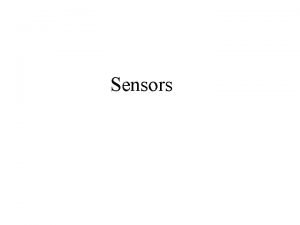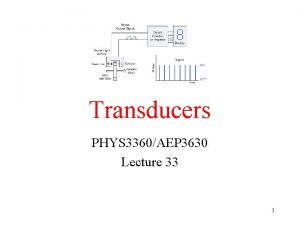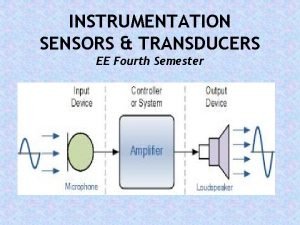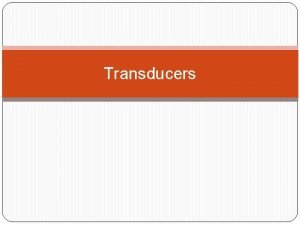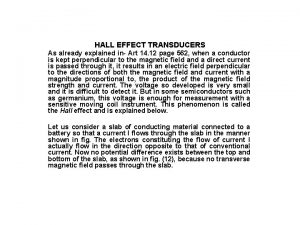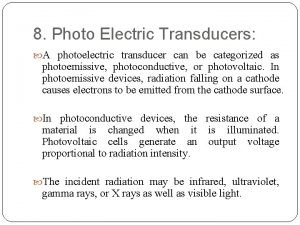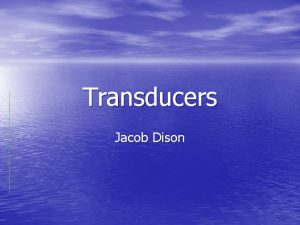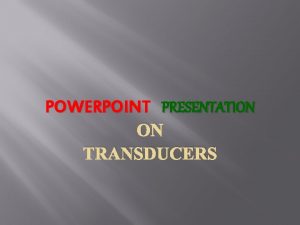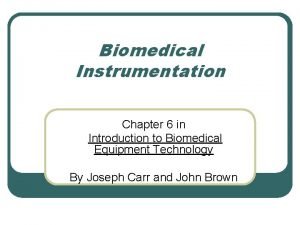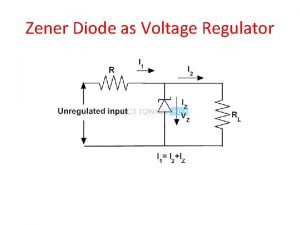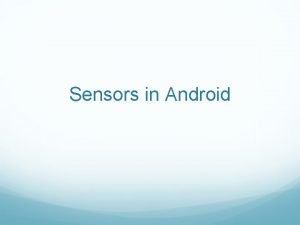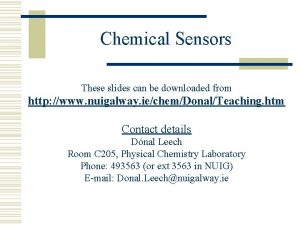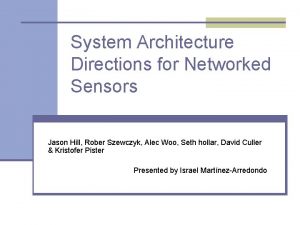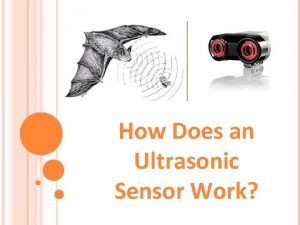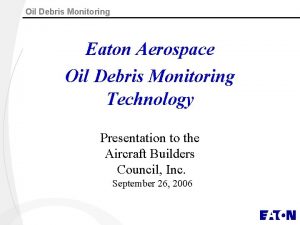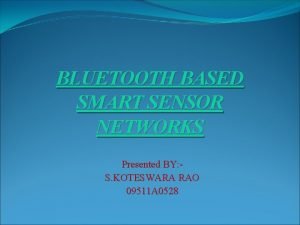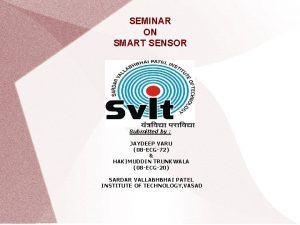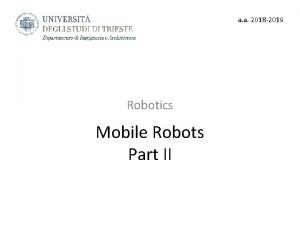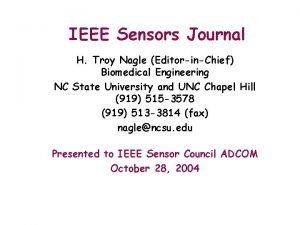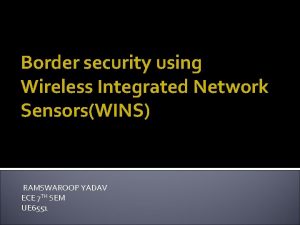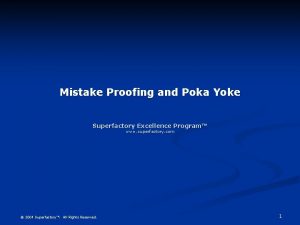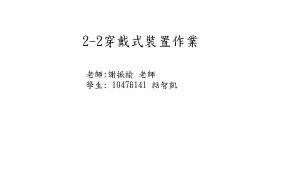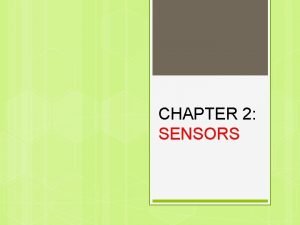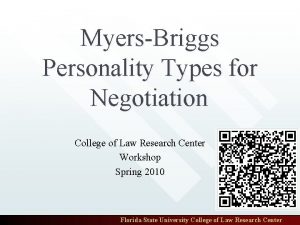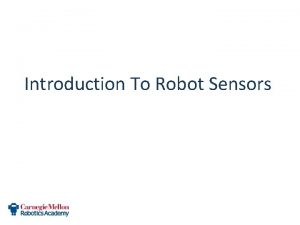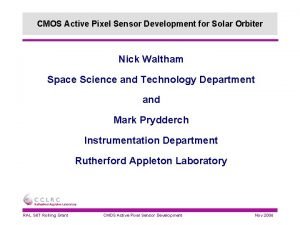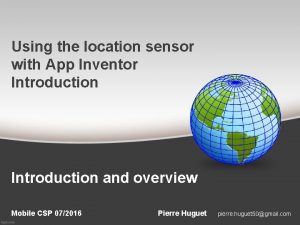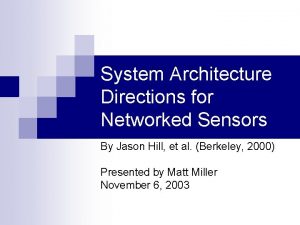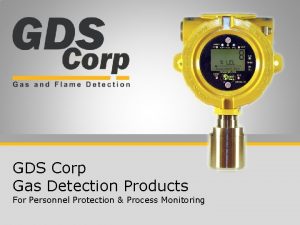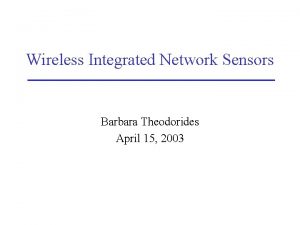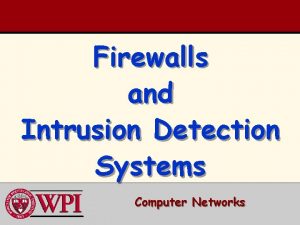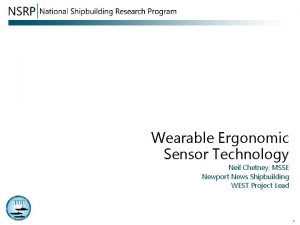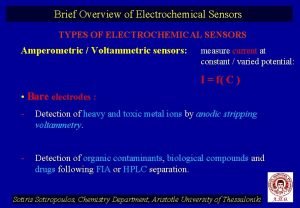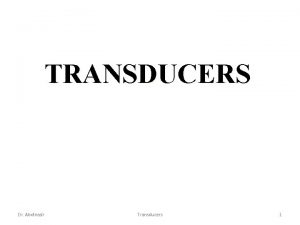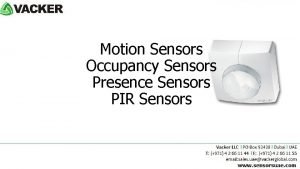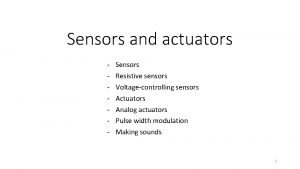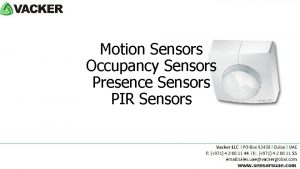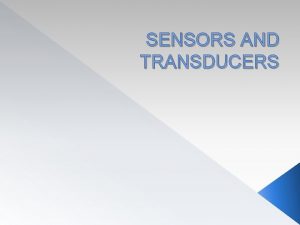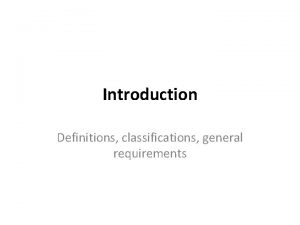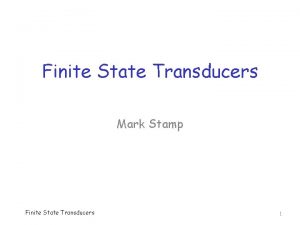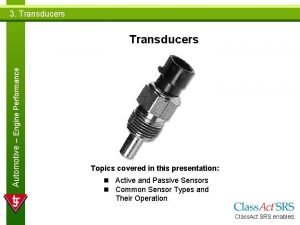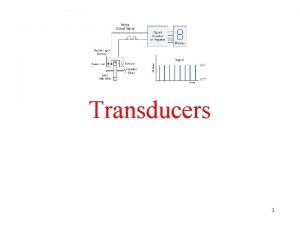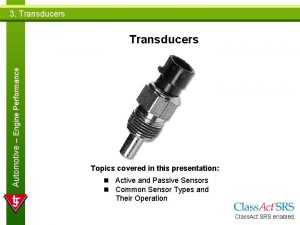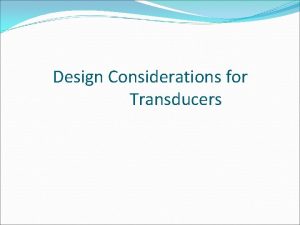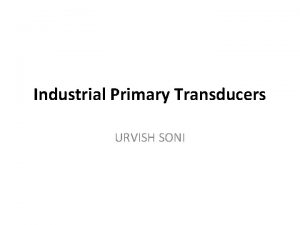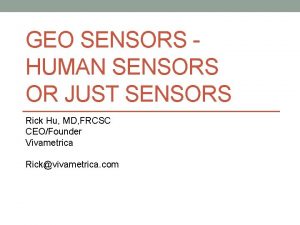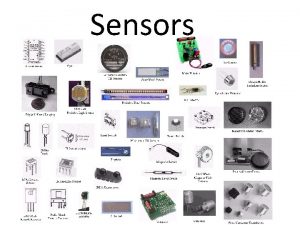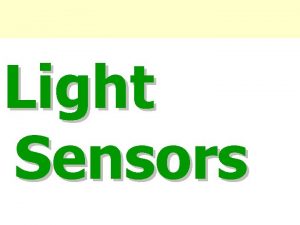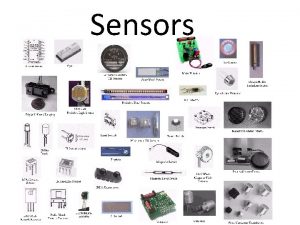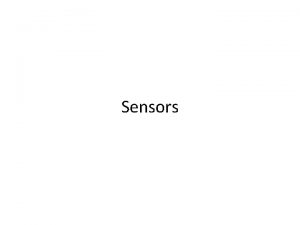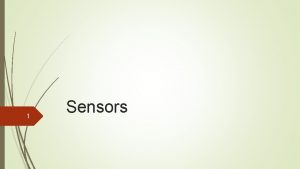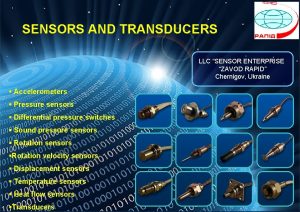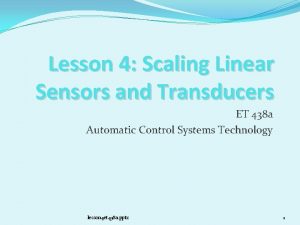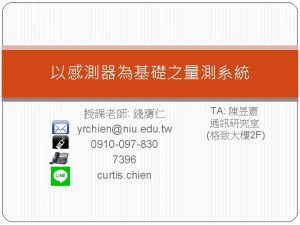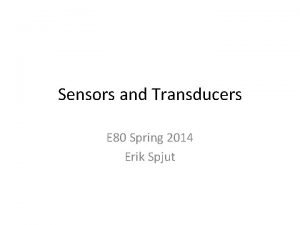Classifications of Sensors Transducers Definitions classifications general requirements



































- Slides: 35

Classifications of Sensors &Transducers Definitions, classifications, general requirements

Some general statements • Sensors/actuators are common • Usually integrated in a system (never alone) • A system of any complexity cannot be designed without them • Very difficult to classify • Difficult to get good data on them • Definitions and terms are confusing

Definitions • What are sensors and actuators? • Why are they so difficult to classify? • Too many principles involved • Multi-discipline devices • A mix of approaches to their design • A mix of units and a range of complexities

Definitions - Sensors • Also called: transducer, probe, gauge, detector, pick-up etc. • Start with the dictionary: • A device that responds to a physical stimulus and transmits a resulting impulse. (New Collegiate Dictionary) • A device, such as a photoelectric cell, that receives and responds to a signal or stimulus. (American Heritage Dictionary, 3 rd ed. , 1996) • A device that responds to a physical stimulus (as heat, light, sound, pressure, magnetism, or a particular motion) and transmits a resulting impulse (as for measurement or operating a control). (Webster, 3 rd ed. , 1999)

Definitions - Transducer • A device that is actuated by power from one system and supplies power usually in another form to a second system. (New Collegiate Dictionary) • A substance or device, such as a piezoelectric crystal, that converts input energy of one form into output energy of another. (from: Trans-ducere – to transfer, to lead) (American Heritage Dictionary, 3 rd ed. , 1996) • A device that is actuated by power from one system and supplies power usually in another form to a second system (a loudspeaker is a transducer that transforms electrical signals to sound energy). (Webster, 3 rd ed. , 1999)

Sensors Stimulus (s) Physical Medium Temperature Signal (S) Sensing Element Conditioning Target Handling Resistance Voltage Information Transducers Micro-sensors 10 -6 m

Sensors A sensor is a transducer that converts a physical stimulus from one form into a more useful form to measure the stimulus • Two basic categories: 1. Analog 2. Discrete • • Binary Digital (e. g. , pulse counter) Sound (db pressure) Ultrasonic (distance) Touch Light (light intensity)

Other Sensors • Temperature • RFID • Barcode • Proximity • Vision • Gyroscope • Compass • Tilt/Acceleration • Etc.

Definitions - Actuator • A mechanism for moving or controlling something indirectly instead of by hand. (New Collegiate Dictionary) • One that activates, especially a device responsible for actuating a mechanical device such as one connected to a computer by a sensor link (American Heritage Dictionary, 3 rd ed. , 1996) • One that actuates; a mechanical device for moving or controlling something. (Webster, 3 rd ed. , 1999)

More confusion • Transducer can mean: sensor actuator transducer can be part of a sensor can be part of a transducer • Many sensors can work as actuators (duality) • Many actuators can work as sensors • What is it then? - All of the above!

Example • Direct sensor actuator link (not always possible) • Two transduction steps (sound-electrical and vice versa) • Note: sensor/transducer are one and the same

Example • Direct sensor actuator link • Two transduction steps (sound-vibration and vice versa) • What is the sensor/actuator and what is the transducer?

Example • • • Direct sensor actuator link Does not work: Sound is converted into change of resistance No transduction takes place (no change of energy)! Must add power to affect transduction Cannot work in opposite direction either

Example • Transduction: pressure to current • A telephone system has two of these!

Our definitions: Sensor • A device that responds to a physical stimulus. Transducer • A device that converts energy of one form into energy of another form. Actuator • A device or mechanism capable of performing a physical action

Our definitions: Stimulus • The quantity that is sensed. • Sometimes called the measurand.

Classification of Sensors and Actuators • • • Based on physical laws Based on any convenient distinguishing property Possible to a certain extent - some devices defy classification 1. 2. 3. 4. Active and Passive sensors Contact and non-contact sensors Absolute and relative sensors Other schemes

1. Active and passive sensors Active sensor: a sensor that requires external power to operate. Examples: the carbon microphone, thermistors, strain gauges, capacitive and inductive sensors, etc. Other name: parametric sensors (output is a function of a parameter - like resistance) Passive sensor: generates its own electric signal and does not require a power source. Examples: thermocouples, magnetic microphones, piezoelectric sensors. Other name: self-generating sensors Note: some define these exactly the other way around

2. Contact and noncontact sensors Contact sensor: a sensor that requires physical contact with the stimulus. Examples: strain gauges, most temperature sensors Non-contact sensor: requires no physical contact. Examples: most optical and magnetic sensors, infrared thermometers, etc.

3. Absolute and relative sensors Absolute sensor: a sensor that reacts to a stimulus on an absolute scale: Thermistors, strain gauges, etc. , (thermistor will always read the absolute temperature) Relative scale: The stimulus is sensed relative to a fixed or variable reference. Thermocouple measures the temperature difference, pressure is often measured relative to atmospheric pressure.

4. Other schemes Classification by broad area of detection • • • Electric sensors Magnetic Electromagnetic Acoustic Chemical Optical Heat, Temperature Mechanical Radiation Biological Etc.

4. Other schemes (cont. ) Classification by physical law • • • • Photoelectric Magnetoelectric Thermoelectric Photoconductive Magnitostrictive Electrostrictive Photomagnetic Thermoelastic Thermomagnetic Thermooptic Electrochermical Magnetoresistive Photoelastic Etc.

4. Other schemes (cont. ) Classification by specifications • • • • Accuracy Sensitivity Stability Response time Hysteresis Frequency response Input (stimulus) range Resolution Linearity Hardness (to environmental conditions, etc. ) Cost Size, weight, Construction materials Operating temperature Etc.

4. Other schemes (cont. ) Classification by area of application • • • • Consumer products Military applications Infrastructure Energy Heat Manufacturing Transportation Automotive Avionic Marine Space Scientific Etc.

Classification of actuators • Low power actuators • High power actuators • Micropower actuators • Etc.

Classification of actuators All of the above In addition: Classification of actuators by type of motion • Linear • Rotary • One-axis • Two-axes • Three-axes • Etc.

Sensing and actuating strategies Look at sensors based on broad area of detection Discuss actuators wherever they fit with sensors Concentrate on the major classes Emphasize compatibility of classes of sensors and actuators.

Requirements for interfacing Needs: • Matching (impedances, voltages, currents, power) • Transformations (AC/DC, DC/AC, A/D, D/A, Vto. F, etc. ) • Matching of specifications (temperature ranges, environmental conditions, etc. ) • Alternative designs • Etc.

Connection of sensors/actuators • The processor should be viewed as a general block • • Microprocessor Amplifier Driver Etc. • Matching: between sensor/processor and processor/actuator

Example - Temperature control • Sense the temperature of a CPU • Control the speed of the fan to keep the temperature constant

Temperature control - implementation • Sometimes the A/D and signal conditioning are separate from the processor • The whole circuitry may be integrated into a “smart sensor” • Match: impedance at input to amplifier and at processor

Temperature control - Alternative design • Simpler (uses an integrated sensor that contains some of the necessary circuitry). May still require an A/D • The performance of this design is not the same (range is 0 -85 C while the previous design was 200 to 2000 C or more)

Units • SI units in most cases • Standard units when understanding warrants it (e. g. psi for pressure) • Will avoid mixed units (a common problem in sensors and actuators)

Computer-Process Interface • To implement process control, the computer must collect data from and transmit signals to the production process • Components required to implement the interface: • Sensors to measure continuous and discrete process variables • Actuators to drive continuous and discrete process parameters • Devices for ADC and DAC • I/O devices for discrete data

Computer Process Control System Transformation Process Continuous and Discrete Parameters Actuators DAC Output Devices Continuous and Discrete Variables Sensors Computer Controller ADC Input Devices
 Limitations of lvdt
Limitations of lvdt Transducer
Transducer Transducer
Transducer Primary and secondary transducer
Primary and secondary transducer Hall effect transducers
Hall effect transducers Photoelectric transducers
Photoelectric transducers Angular velocity transducer
Angular velocity transducer Bidirectional transducers in automata theory
Bidirectional transducers in automata theory Transducers ppt
Transducers ppt Recording problems in biomedical instrumentation
Recording problems in biomedical instrumentation Zener diode equations
Zener diode equations Motion sensor in android
Motion sensor in android Chemical sensors ppt
Chemical sensors ppt System architecture directions for networked sensors
System architecture directions for networked sensors How does the ultrasonic sensor work
How does the ultrasonic sensor work Qdm
Qdm Feeler communication style
Feeler communication style Bluetooth based smart sensor network
Bluetooth based smart sensor network Conclusion of smart sensors
Conclusion of smart sensors Exteroceptive sensors examples
Exteroceptive sensors examples Ieee sensor journal impact factor
Ieee sensor journal impact factor Border security using wins
Border security using wins Poka-yoke method
Poka-yoke method Wearable inertial sensors
Wearable inertial sensors Sensor definition
Sensor definition Types of negotiations
Types of negotiations Introduction to sensors ppt
Introduction to sensors ppt Development of solar sensors
Development of solar sensors Gps mit app inventor
Gps mit app inventor System architecture directions for networked sensors
System architecture directions for networked sensors Gds sensors
Gds sensors Wireless integrated network sensors
Wireless integrated network sensors Ids sensors
Ids sensors Mechatronics lecture notes
Mechatronics lecture notes Ergonomic sensors
Ergonomic sensors Types of electrochemical sensors
Types of electrochemical sensors
